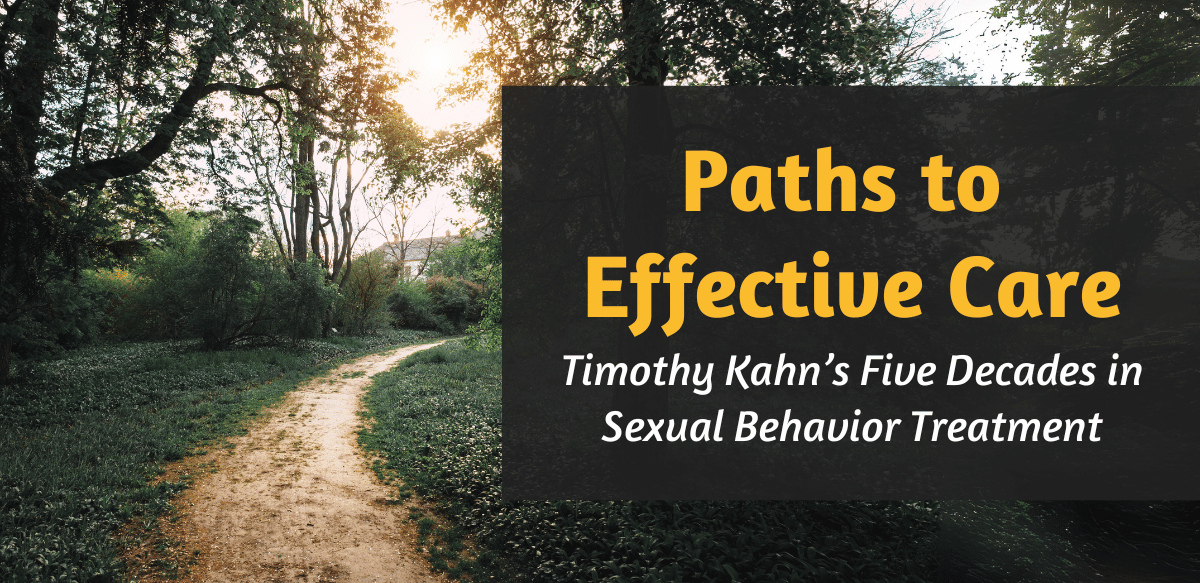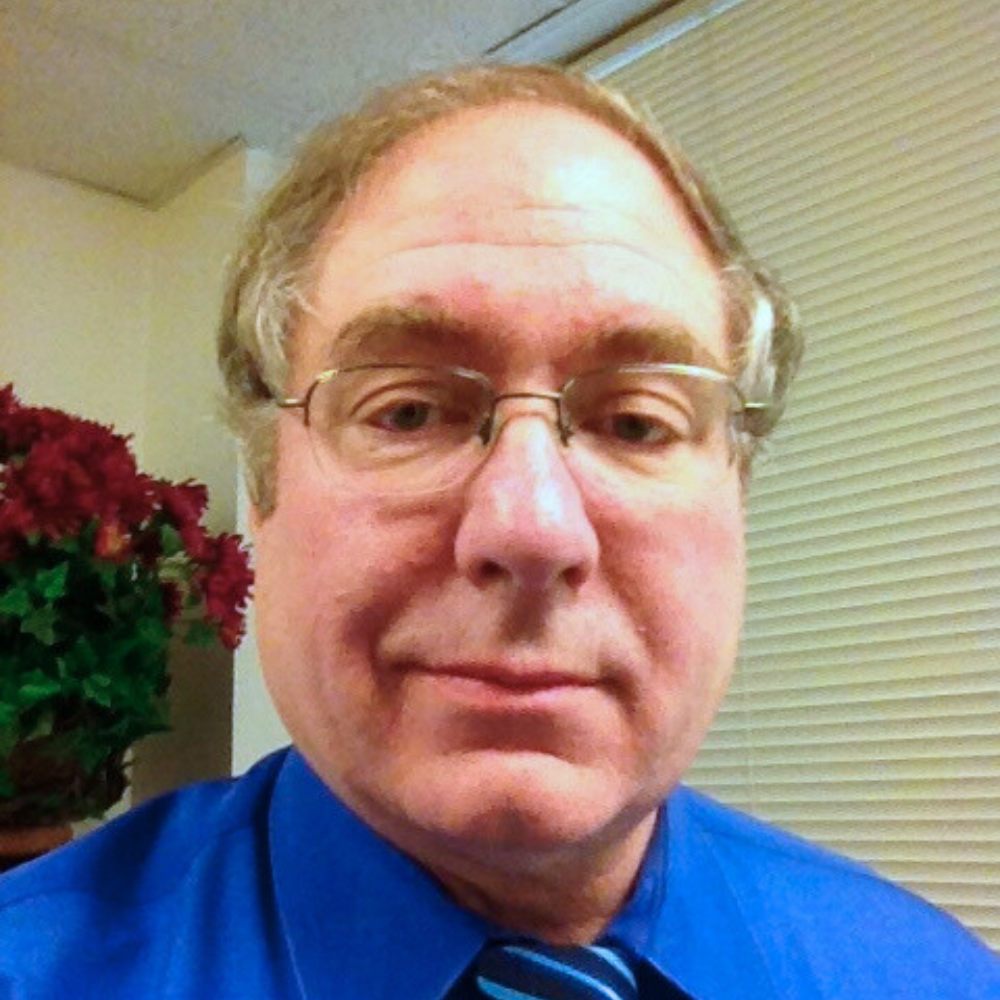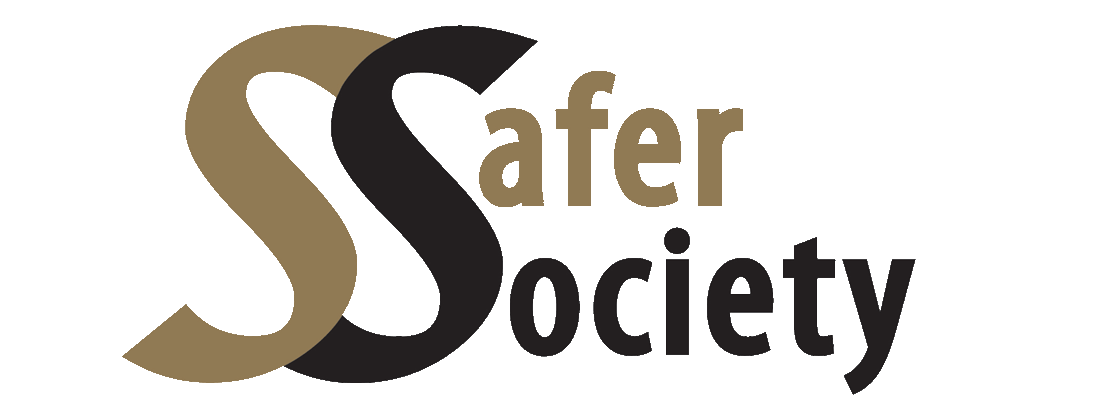
When Timothy Kahn, MSW, CSOTP, began working with youths who had engaged in sexually harmful behaviors in the 1970s, he was just 18 years old. Now, after nearly five decades in the field, his perspectives on what leads young people to commit sexual offenses—and how to help them—have evolved significantly.

After earning his Master of Social Work from Boston College in 1987, Kahn helped establish one of the first juvenile treatment programs for those involved in sexual offenses. Currently practicing in Bellevue, Washington, he conducts evaluations and treatment with children, adolescents, and adults with sexual behavior problems, serves as an expert consultant in professional sexual misconduct cases, and has authored multiple treatment workbooks, including the fifth edition of Pathways, for 14- to 18-year-olds and Pathways: Base Camp, for 11- to 14-year-olds.
Beyond Single-Factor Explanations
Kahn explained that in the 1970s, the field operated under a relatively simple assumption. At the time, many believed that being sexually abused inevitably led to sexual offending. Although the experience of sexual abuse can teach children about sexuality in harmful ways and can potentially translate into later sexual behavior problems, ATSA research confirms what Kahn has observed clinically: while connections exist between experiencing sexual abuse and developing sexual behavior problems, other precursors to harmful sexual behavior are equally significant but less understood. These include exposure to pornography, family dysfunction, lack of supervision, and responses to various traumas. This understanding aligns with contemporary approaches that recognize the multiple paths young people may take toward harmful behaviors.
The Role of Sexualized Media
Perhaps one of the most significant shifts Kahn has witnessed involves the role of pornography and sexualized media in youth development. Working alongside researchers like Bill Friedrich, Kahn recognized that exposure to pornographic material may be an even stronger contributor to sexual behavior problems than sexual victimization itself. This observation resonates with his clinical experience—while many clients had histories of sexual abuse, an even larger number had extensive exposure to pornography.
“Child Sexual Abuse Material and pornography in general is absolutely ubiquitous; kids are constantly tempted to look at it and it’s available on almost any device. You can access it from your Xbox, your PlayStation, or your Nintendo Wii. I now believe that exposure to pornography is more of a causative factor than is sexual abuse. I had a lot of clients who had been sexually abused and were acting out sexually, but I had a lot more clients who had looked at porn and were acting out sexually.” – Timothy Kahn
The accessibility of sexualized content has changed dramatically since Kahn began his career. Content that once required a good deal of effort for young people to access, such as magazines like Playboy and Penthouse, is now instantly available on gaming consoles, smartphones, and virtually any internet-connected device. This ubiquity creates new challenges for treatment providers and families attempting to support young people’s healthy sexual development. In response to this reality, Kahn has adapted his treatment approach to address pornography directly in every session. He regularly assesses clients’ experiences with what he terms “pornography temptations,” using direct questions to help young people articulate their struggles.
Family Systems and Learned Behaviors
Kahn’s work has repeatedly demonstrated the powerful influence of family dynamics on youths’ sexual behavior. Many young people he treats come from families with multiple members who have engaged in sexually harmful behaviors. These patterns suggest clear avenues of social learning, where children observe and internalize the harmful relationship dynamics or abusive behaviors that are modeled by their parents or siblings.
One particularly striking case illustrates this dynamic. After extensive treatment, a young client of Kahn’s recognized how witnessing his father’s abusive treatment of his mother shaped his own behavior patterns. Despite never experiencing direct abuse himself, years of observing disrespectful and controlling behaviors created a template for his own harmful actions. This case exemplifies how family dysfunction, even without direct victimization, can contribute to the development of problematic sexual behaviors.
Maintaining Professional WellBeing
Kahn’s longevity in this challenging field offers valuable lessons about sustaining a career working with trauma and harmful behaviors. He acknowledges that this work affects practitioners in profound ways, potentially shifting how they view the world and understand human behavior. Secondary trauma is a real occupational hazard that requires active management.
His strategies for maintaining balance include regular physical activity, cultivating interests completely separate from clinical work, and using appropriate humor as a coping mechanism. For Kahn, tree farming and cycling provide necessary respite from the intensity of therapeutic work. These activities offer both physical outlet and mental distance from the challenging narratives encountered in treatment rooms.
“Working with the most difficult clients…can certainly leave an imprint on us. Don’t underestimate the emotional toll it takes on you. This work is doing stuff to us that we have to be prepared for. And we have to be able to get the support we need to deal with that.” – Timothy Kahn
Implications for Practice
Kahn’s extensive experience offers several key insights for today’s practitioners:
- Assessment must be comprehensive. Understanding a young person’s path to harmful behavior requires examining multiple domains: victimization history, media exposure, family dynamics, peer relationships, and individual factors. Single-factor explanations rarely capture the full picture.
- Treatment must address modern realities. The ubiquity of pornography and sexualized media cannot be ignored in contemporary treatment planning. Practitioners need comfort and skill in addressing these topics directly with young clients and their families.
- Family engagement remains essential. Given the powerful influence of family dynamics, treatment that excludes or minimizes family involvement misses critical opportunities for change.
- Professional sustainability matters. The intensity of this work demands attention to practitioner wellbeing. Without active self-care strategies, burnout and secondary trauma can compromise both personal health and clinical effectiveness.
Looking Forward
For professionals working with youths who have engaged in sexually harmful behaviors, Kahn’s experience underscores several enduring truths: the importance of seeing beyond behaviors to understand underlying needs, the necessity of addressing contemporary challenges like pornography exposure, and the critical role of family systems in both problem development and resolution.
The path forward requires maintaining the balance Kahn has modeled throughout his career. This means grounding practice in research while remaining responsive to clinical realities, addressing harmful behaviors while maintaining hope for change, and supporting young people’s growth while ensuring community safety. These principles, refined over nearly five decades of practice, continue to guide effective intervention with youth who have engaged in sexually harmful behaviors.
“Anyone can change. If just one person will believe in them, will you be that person?” – Timothy Kahn
Resources by Tim Kahn:
- Publications
- Pathways, 5th Edition: A Guided Workbook for Youth Beginning Treatment: A workbook for youths with problematic sexual behaviors, including those who have engaged in non-consensual sexual contact with peers as well as youths who have been viewing child sexual abuse materials (CSAM).
- Pathways: Base Camp: A workbook for 11- to 14-year-olds that helps clients with problematic sexual behaviors build on existing strengths and develop healthy and productive lifestyles.
- Healthy Families: A Guide for Parents of Children and Adolescents with Sexual Behavioral Problems: Written in an easy-to-comprehend style, Healthy Families is packed with essential information for parents confronting one of the most challenging of situations, a child with sexual behavior problems.
- Trainings/Webinars:
